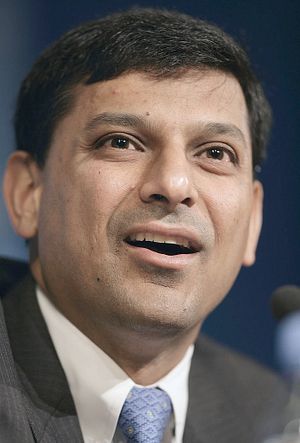India’s economic policymakers move into the New Year probably relieved that a very difficult 2013 has finally ended. However with low growth rates; persistent and problematic inflation; ongoing worries about when the U.S. Fed’s “taper” will actually kick in and what effects it will bring; and an uncertain political situation created by the upcoming summer elections, 2014 may turn out to be pretty difficult too.
The main economic growth figure India uses is based on a fiscal year ending each March. The figure released in March 2013 was at a decade low of only 5 percent. It seems likely that India’s 2013-14 fiscal year ending this March will bring an even lower figure, which the Reserve Bank of India (RBI) predicted may be 4.8 percent in a review document back in October.
The Reserve Bank of India remains extremely important in India’s multiple economic battles into 2014. Governor Raghuram Rajan surprised many when he chose to leave rates on hold a few weeks ago.
This rate hold was despite stubborn inflation figures for November. Consumer prices rose 11.24 percent in the month from a year earlier. Wholesale inflation came in at 7.52 percent for the same month. Food inflation remains a primary driver, and Rajan’s comment that “…We are not ignoring food inflation, but we would like to see through the noise. And for that, we want to wait for a month more” suggests that the RBI is indeed focusing on core inflation, or the rate of price change without food and energy costs included.
Rajan was also given a bit of reprieve by the stronger performance of the rupee since the “taper-scare” of the late summer and early autumn. Indeed the drop in the rupee (which was arrested soon after Rajan took over at the RBI and has risen 11 percent from its mid-2013 lows) was also a key driver of inflation. The RBI’s hold in December certainly feels more like a wait-and-see strategy ahead of December’s inflation data.
Even while trying to see through the “noise” of food volatility, the RBI cannot sit idly by if either inflation picks up again or the rupee sees further weakness. The outlooks for both remain unclear for January and February, and persistently high food prices will eventually feed through into wage and wider inflation.
After the 2013-14 GDP data release, India will already be heading into an election season that is sure to be another complicated and spectacular affair. Economic observers already have extremely high hopes for the post-election government in terms of enacting the difficult-but-necessary reforms if India’s growth is not going to fall much further during the 2014-2015 fiscal year. While Rajan and the RBI continue their skillful tactical battles with regard to the currency, inflation and growth; it is the second half of the year and more strategic economic reforms that will determine India’s economic fate. The post-election government will not have much time to get into gear.

































